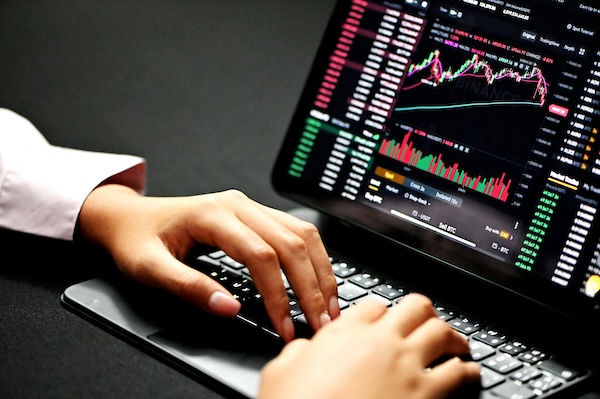Diving into the trading world can feel exciting and overwhelming at the same time. While there are many stories of people who have made millions from trading, this isn’t always the case, and in many instances, traders make decisions that end up being very costly. So, what does it really take to be a successful trader? Is there any secret known only to a few people? Not really – it all comes down to mastering some core principles.
Navigating the financial markets can feel like a maze at the beginning. Still, with solid planning, a risk management strategy in place, a commitment to learning, and practice, you’ll set yourself up for success in the trading landscape. Read on to learn the exact steps to become a profitable trader!
Choose your target market
You can’t think of becoming a successful trader unless you first choose the right market that suits your preferences and lifestyle. Are you interested in stocks, commodities, Forex, or Futures? While trading takes time to learn, as it involves many complexities, understanding certain fundamentals is crucial to making informed decisions, minimizing losses, and maximizing profits. Each market has unique advantages and disadvantages, and selecting one comes down to your preferences and schedule. For instance, if you’re someone with a busy schedule throughout the day, stock trading may not be ideal for you as stock markets operate within standard hours.
In that case, you may find Futures or Forex a better alternative, as they have round-the-clock trading hours, providing the necessary flexibility to trade in the evenings. After selecting a market, it’s essential to take the time to understand its terminology, characteristics, and the factors that impact its price movements.
Create a trading plan
Before entering trades, ensure you have a trading plan in place, as it will serve as your roadmap and keep you focused, allowing you to avoid impulsive decisions. Your plan should cover your time commitment, goals, capital management, and the balance of risk versus reward. Having a solid plan will allow you to be more confident when trading, but of course, you should remember that it’s only a guide, and you should stay flexible as the market shifts.
If you’re just starting to trade, consider learning basic chart patterns, trying news trading, and identifying support and resistance levels. As you become more experienced, you can choose other tools, such as technical indicators, but keep in mind that there’s no method out there that will ensure success – the secret is to get insights into potential price moves.
Start small, but keep practicing
After getting a good feel for the market you’ve chosen, you want to start learning how to trade effectively. While this may sound simple, it’s, in fact, challenging, even for seasoned traders. The truth is that nothing will help you more than hands-on practice. After all, no trader is born with complete knowledge, and they don’t just read about the market; instead, they dive in and learn by using the platforms directly. The good news is that many platforms offer demo trading accounts, allowing you to gain trading experience without risking real money.
Using a demo account will allow you to become comfortable with the market’s rhythm, experiment with different strategies, and build your confidence before making your first actual trade. Consider taking advantage of free webinars, courses, and other available resources that can guide you on your path.
Leverage technical analysis
Technical analysis is an effective tool that traders use to enhance their decision-making. This tool isn’t just about reading a chart – it enables you to understand market psychology and utilize indicators, such as moving averages, to enhance your trading. In technical analysis, another tool that helps traders is candlestick patterns, which signal potential market movements. While bullish reversal patterns indicate a shift from downward to upward momentum, bearish reversals signal a switch from upward to downward momentum.
There are many types of candlestick patterns, and if you want to leverage them in your trades, it’s essential first to learn to identify them. For instance, a Morning Star Doji pattern is a bullish pattern consisting of three candles, while a Bullish Kicker is a candlestick pattern characterized by a bearish candle followed by a robust bullish candle. Taking the time to understand how these patterns work enables you to identify what is happening in the battle between the bulls and the bears, allowing you to make informed decisions accordingly.
Treat trading like a business
If you’re serious about succeeding with trading, start treating it like a business instead of a hobby. When you only see it as a hobby, you may not be motivated enough to fully commit to it but treating it as a business can be a game-changer. It creates a shift in your mindset and encourages you to track your losses, expenses, and risks, reducing stress and uncertainty and saving on taxes.
Seeing trading as a business can also sharpen your focus, as you won’t be thinking about predicting every single move in the market ( which is a mindset that can quickly waste your time and energy), but rather, on what’s actually important: managing risk. When you make risk management your goal, your efforts will naturally become more productive as well. Focusing on the essentials will also help ensure you remain steady while finding and refining your trading strategy. No trader has ever seen the ideal approach immediately, which is why patience is crucial when navigating the trading landscape.
Diversify your portfolio
Here’s the thing: it’s never a good idea to put all your eggs in one basket. Instead, you should diversify your portfolio, as this allows you to spread your risk by investing in different asset classes, such as forex, stocks, or commodities. In this case, if one market takes a hit, the consequences won’t be so dire. Some traders select assets with a negative correlation, meaning that if the price of stock A declines, the value of stock B increases.
Another idea for portfolio diversification is to choose ETFs (exchange-traded funds) and mutual funds, as they allow you to invest in different assets simultaneously. However, keep in mind that some hidden commissions and costs may cut into your earnings.
Last words
Becoming a successful trader can be an enriching journey. Of course, this journey can be filled with challenges, but the freedom it brings and the potential for high returns make it all worth it.


